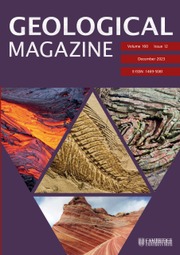Article contents
III.—The Sea against Rivers: or the Origin of Valleys
Published online by Cambridge University Press: 01 May 2009
Extract
In a former article I endeavoured to show that the more abrupt inequalities of the earth's surface, so far as they consist of escarpments with their associated phenomena, are chiefly due to the former action of the sea. Before proceeding to consider the origin of Valleys, I find it necessary to refer to a statement I made in the last article about Raised Beaches (page 69). My object was merely to show that the preservation of numerous terraces in the Cretaceous districts of Wilts and Dorset furnished an evidence of limited subaërial denudation since these terraces were formed. The terraces to which I alluded, principally occur at comparatively low levels; and that they are raised beaches can, I think, be clearly proved. But this is not necessary, so far as the present controversy is concerned; for the preservation of terraces in gravel (more easily worn away than chalk, according to the subaërialists), which all admit are either raised sea-beaches, or glacial-lake-beaches (such as those of Glenroy), afford an equally convincing proof of the impotence of rain as a denuding agent.
Information
- Type
- Original Articles
- Information
- Copyright
- Copyright © Cambridge University Press 1866
References
page 155 note 1 Geol. Mag., vol. iii., No. 2, 02.,1866.Google Scholar
page 155 note 2 Mr. Codrington, F.G.S., informs me that he has found made ground on the brows of several terraces of the class locally called Linchets, near Warminster. That the Belgæ or other races may have increased the transverse horizontality of some of these terraces, or may even have formed whole terraces, is easily conceivable; but that the thousands of terraces in the chalk districts of England were all fundamentally of human workmanship, is, I think, a theory involving such a series of improbabilities as to render it credible only to those who assign a most unwarrantable degree of stability to the relative levels of land and sea.
page 155 note 3 Quar. Journ. Geol. Soc., vol. xxi., No. 84, 11., (1865).Google Scholar
page 156 note 1 Have any geologists yet particularly noticed what the sea is now doing under the chalk clifis of the Isle of Wight? From some statements in Mr. Whitaker's paper (Quar. Journ. Geol. Soc., vol. xxi, 11., 1865) I should infer that in many places no deposit is allowed to accumulate under the cliffs, and that the “hard Chalk-marl and harder Upper Green-sand stretch out as a foreshore for some way westward of their outerop in the cliff”, so free from detritus, as to allow their even bedding to be clearly perceived.Google Scholar
page 158 note 1 Camden long ago called a hollow in this neighbourhood the Dismal Hollow.
page 158 note 2 See MrFergusson's, Paper on the Ganges, in Quart. Journ. Geol. Soc., vol. xix., 08. 1863.Google Scholar
- 1
- Cited by

